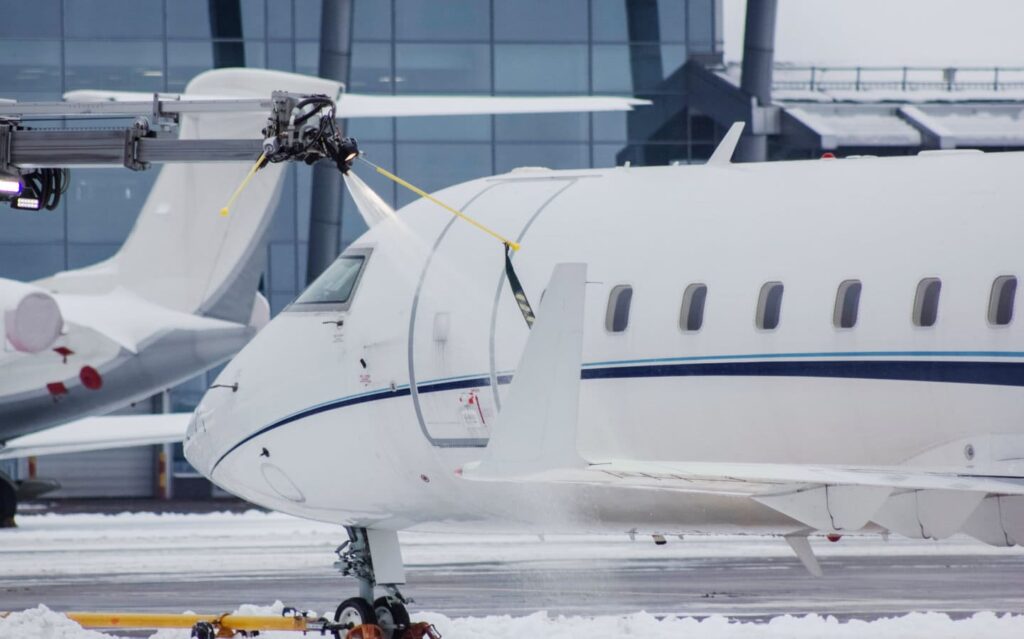
Deicing is a critical maintenance process of removing snow, ice, or frost from an aircraft’s surface during the winter months so we would like to give you a better understanding of why so much time and money is spent on de-icing aircraft. Aircraft are designed to fly with clean surfaces, and during colder periods of the year, icy materials can build up, disrupt airflow, and interfere with flight safety during take-off.
After deicing, the ground crew may apply anti-icing fluid onto the aircraft. Anti-icing fluid has a higher glycol concentration than standard de-icing fluid and is unheated, undiluted, and thickened. This is to help prevent the future build-up and accumulation of ice while on the ground. When a plane accelerates for take-off, anti-icing fluid will naturally run off and leave a clean surface for a proper flight.
The Costs Associated with De-icing
The cost of de-icing a plane varies based on multiple factors such as state and city the airport is located in, the type of de-icing fluid needed to dissolve the ice, and how much fluid is needed based on the aircraft size and weather conditions. Once applied, the de-icing solution is only good for a limited amount of time before it may need to be re-applied to the aircraft. This needs to be considered if there are any flight delays. The entire process of de-icing usually takes approximately 10-30 minutes, depending on the size of the aircraft and the type of deicing solution needed.
What is the De-icing Solution Made Of?
The de-icing solution is a glycol-based substance typically mixed with water. The solution is sprayed hot onto the aircraft at a temperature between 150 and 180 degrees fahrenheit, using high-pressure which helps to melt and remove built-up ice on the aircraft wings, nose, and tail. The most common types of de-icing solutions are called “Type I” and “Type IV”. These both aid in removing ice, and adding an anti-ice film to the plane. See a breakdown below of all types of de-icing solution available:
Type I: Combined with water in a 55:45 mixture for low viscosity. Type I is sprayed on hot at a high pressure to remove ice quickly—typically dyed orange.
Type II: Combined with water in a 75:25 mixture, resulting in a jelly-like feel. This fluid is applicable for both deicing and anti-icing measures. Typically clear/straw in appearance.
Type III: Designed as a middle-point between Type I and Type II ratios.
Type IV: Not diluted with water resulting in a highly viscous substance, most applicable for icing prevention. Dyed emerald green.

